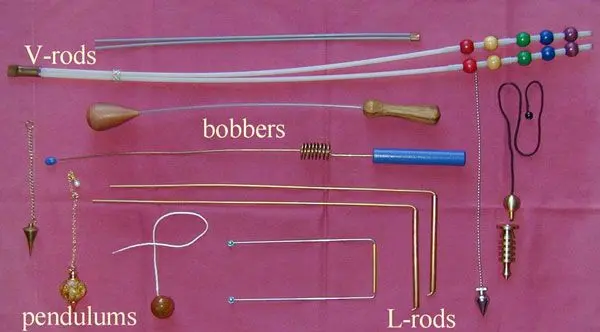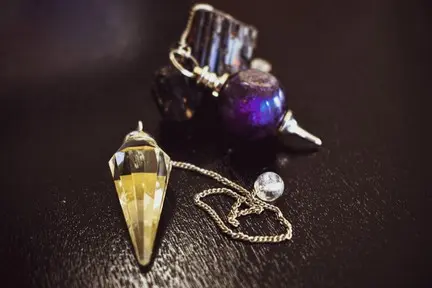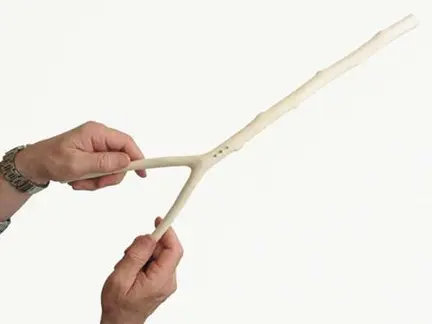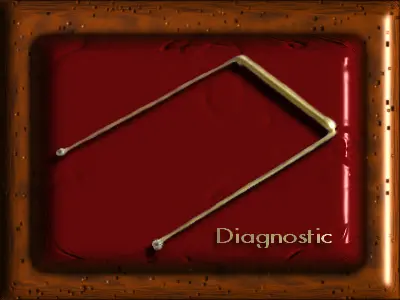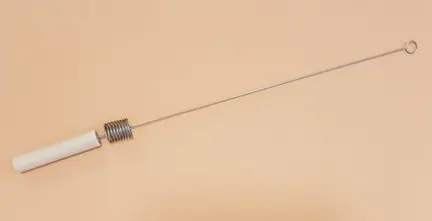What Tools are required?
The first point to get clear is that there is no magic built into the tools. They are inanimate indicators which are moved subconsciously by the dowser in accordance with that dowser’s ‘Code Language’, which can be different for everyone.
Essentially, simplicity is the keyword; some dowsers use all sorts of tools while some, myself included use the simple things in life which, at the end of the day, give you the same results.
The pendulum: This is a simple weight on the end of a piece of cord or light chain. The wooden light pulls are ideal but the pendulum varies from a key on the end of a bit of cord to a ring or a crystal. I use a piece of hazel twig for indoor working and a heavier crystal for outdoors, simply because you need something that will be heavy enough not to be blown around by the wind. The pendulum is the most versatile tool for
use in ‘map dowsing’ and straight question and answer type of dowsing. For me, it rotates in a clockwise direction for ‘YES’ and anti-clockwise for ‘NO’. It swings from side to side if the question is not understood and backwards and forwards in the ‘Search’ position.
Angle rods: The easiest and simplest of all tools to use. They are just lengths of wire bent at right angles and can be made quite easily from old metal coat-hangers, welding rods, thin brass rod, thick wire; for example; take a pair of wire coat hangers and cut them so that the top is about 9 to 12 inches long and from the angle towards the hook for hanging, about 4 to 5 inches long, then, having cut it, bend the angle to 90 degrees. The short length is held in the hand as the handle. However again in windy weather, I have a pair of rods of 6 mm brass rod (almost 1/4 of an inch in diameter).
‘V’ rods: Again there are various sizes, weights and materials. The traditional being hazel, this was mainly because it is a pliant wood that doesn’t dry out too quickly. Quite commonly today, plastic is used at a length of about 16 to 18 inches long.
W rod: This is made as above except that it is in the shape of a ‘W’. The advantage of this is that it is very accurate when locating and tracing small pipes etc. However, it is difficult to get used to.
Bobber Wands: These are just springy lengths of thin branch about 36 inches long and are ideal for dowsing up a wall, for example following the path of an old chimney – these tend to meander up the walls of old houses. A modern material is taking over and the usual wand is a 36 inch length of fairly thin plastic.



